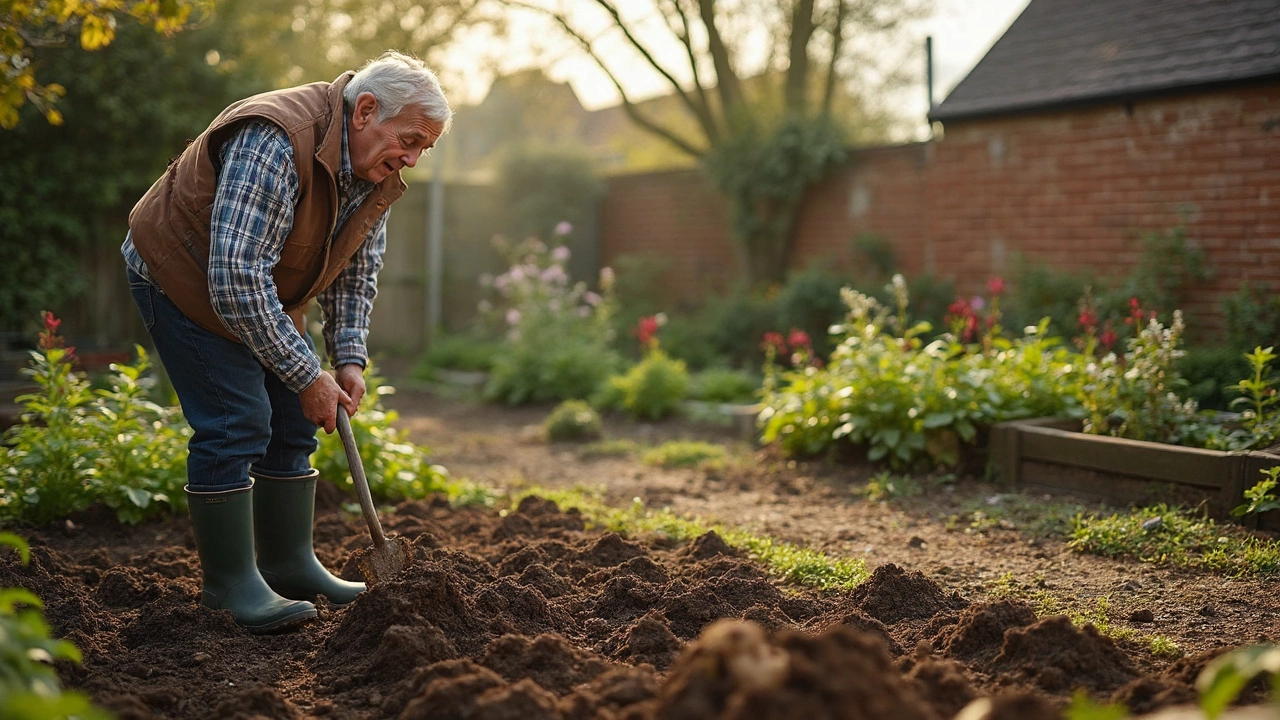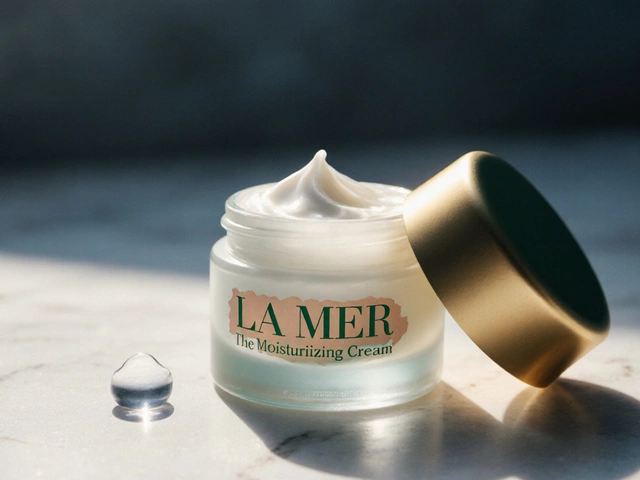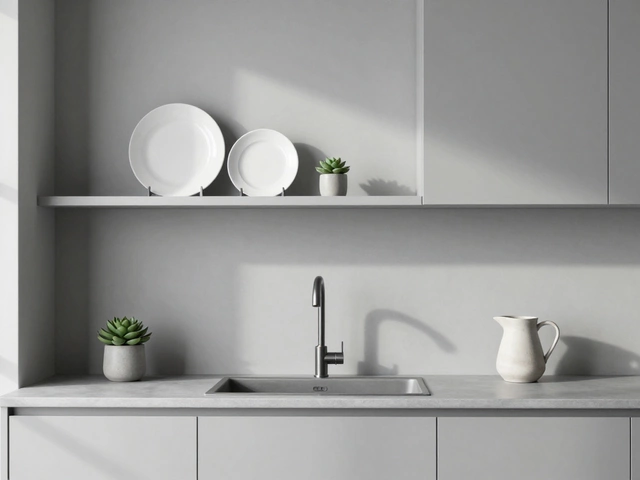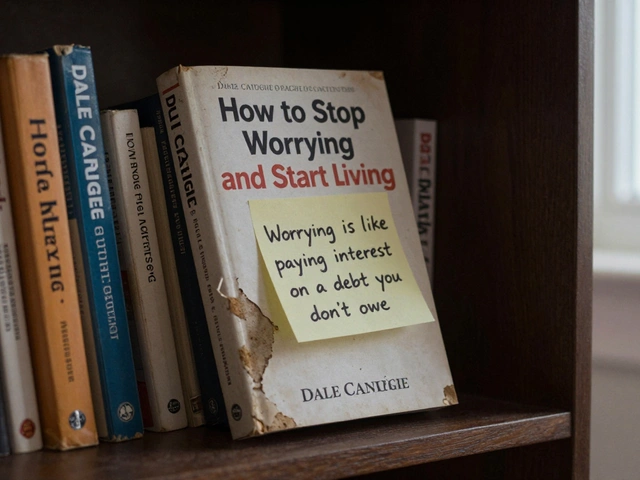If you’re itching to get out into your garden and prep that bed, you’ve probably wondered whether you should till once—or go over it several times just to be sure. Here’s the thing: More isn’t always better. Over-tilling can work against you, breaking down soil structure and even making it harder for roots to find their way later.
For most home gardens, one good till is usually enough before planting. You’ll turn up weeds, loosen the soil, and make it easier for roots to stretch out. But after that, put away the rototiller before you overdo it. Too much tilling can turn that nice crumbly dirt into a dry, clumpy mess—exactly the opposite of what you’re aiming for.
Of course, things can look a bit different depending on your soil. Got super compacted clay? Sometimes two passes help, just not back-to-back on the same day. And if you’re swapping out a lawn for a veggie patch, a second round in a few weeks can really help break up those tough spots. But in most cases, less is more—and timing matters even more.
- Why Do We Till the Garden?
- How Many Times Is Enough?
- Timing Matters: When to Till
- Soil Types and Tilling Frequency
- Common Tilling Mistakes
- Tips for Healthier Soil
Why Do We Till the Garden?
So, why do people even fire up a tiller each spring? There’s a reason it’s such a classic move among gardeners. Tilling shakes up the soil, making it easier to plant and usually boosting root growth right from day one. It also helps mix in any compost or fertilizer you’re adding, plus breaks up weeds before they have a chance to grab hold.
Here’s the plain truth—tilling is all about setting the stage for healthier plants. When you turn the soil, air pockets form and that loosens things up. Roots don’t like fighting through rock-hard ground. Broken-up dirt just makes everything easier, whether you’re tucking in tomatoes or sprinkling carrot seeds.
Let’s break down what tilling garden beds really does:
- Loosens compacted soil. Water and air get down where roots need them, instead of just pooling on top.
- Mixes nutrients. When you add compost or fertilizer, mixing helps get all those good things spread around evenly.
- Chops up old roots and weeds. You stop weeds early and break down last year’s old plant leftovers, which can feed the next crop.
- Warms up the soil faster. Looser dirt, especially in spring, catches heat and helps seeds sprout sooner.
Did you know that good soil for veggies is almost half air and water? If your garden feels hard as a rock, roots get stuck, water runs off, and plants just can’t thrive. The point of garden soil prep is to invite in those air and water pockets so new growth takes off.
Tilling isn’t the answer every single year for every bed, but the first round sets up a nice blank canvas. It’s the easiest way to give new vegetable bed roots a fighting chance—just don’t get carried away, or you’ll undo all the benefits you set out to create.
How Many Times Is Enough?
This is where a lot of gardeners get tripped up. We hear stories about farmers working the land over and over, but for a regular tilling garden session at home, one thorough pass is enough in most cases. You want to loosen the soil to about 8 to 12 inches deep and break up any chunks. The goal is to get the soil fluffy, not powdery.
If you’re dealing with untouched ground—especially if it’s full of sod, thick weeds, or roots—you might need a second pass. But don’t do it back-to-back. Give the soil a week or so to settle, then go in for another round if spots are still clumpy or you spot a lot of weeds regrowing. For most garden soil prep, less is really more. The more often you till, the more you risk harming earthworms and good bacteria that your plants need.
Here's a rough guide:
- New gardens (never dug): Once in early spring and maybe again just before planting, especially if the first till brings up a ton of roots and rocks.
- Established beds: One tilling each season, right before planting, is plenty. Spot-till problem areas if some patches are hard as a rock or packed with weeds.
- Heavy clay soil: Sometimes needs a second round after you add compost or sand, but let the additives mix in with rain or a few days' rest before round two.
Too much tilling beats up your soil and damages the structure that helps water move well and roots stay strong. According to recent gardening research, gardens that are tilled too often see up to 30% lower earthworm counts in just one season compared to minimal-till plots. That’s a lot of lost worm power for your vegetable bed.
Bottom line: Give your soil a break. Do one careful, slow pass for most situations, and only go in for a second if things are still tough. Your back, your plants, and your soil critters will appreciate it.
Timing Matters: When to Till
Tilling at the wrong time can lead to a whole mess of problems, like clumpy dirt, compacted soil, and weeds that actually come back even stronger. So, when is the best time to get out the tiller?
For most gardens, the sweet spot for tilling garden soil is in early spring, after the soil has thawed and dried out a bit but before you start planting. You don’t want to till if it’s too wet—pick up a handful of dirt and squeeze it. If it forms a sticky ball that won’t break apart, it’s too wet. If it crumbles in your hand, you’re good to go.
Fall can be another good time to till, especially if you want to mix in compost or get rid of stubborn weeds before winter. Just don’t till right after heavy rain or when the soil is soaked. Wet soil turns into chunks that turn rock hard when dry, making it tough for your plants to grow roots.
Here’s what you want to remember about garden soil prep timing:
- Wait for frost to pass: Frozen soil is a no-go and causes more harm than good.
- Avoid right after rain: Let things dry out so you’re not making mud pies!
- Don’t till in the heat of summer: Hot, dry soil loses moisture fast and can stress your plants before they even start.
For a clearer idea, check out this quick chart:
| Season | Should You Till? | Best Use |
|---|---|---|
| Early Spring | Yes | Prepping beds before planting |
| Late Spring/Summer | No | Let soil rest; only amend if needed |
| Early Fall | Sometimes | Mixing in compost, clearing weeds |
| Winter | No | Frozen soil, just leave it be |
So, bottom line? Aim for early spring or fall, make sure your soil is just moist (but not soggy), and skip tilling when the ground is super wet or baked dry. You’ll save yourself hassle and end up with a better garden bed.

Soil Types and Tilling Frequency
Not all garden dirt acts the same when it comes to tilling garden beds. That’s why it pays to check what kind of soil you’re working with before firing up the tiller. Your soil’s texture—whether it’s sandy, full of clay, or a decent loam—can totally change how many times you should till.
Clay soil is notorious for being tough and sticky. If you’re dealing with the heavy stuff, one till might not cut it, especially if it’s packed tight or full of roots. In that case, it’s better to do two passes:
- Do the first till in early spring while the soil is moist but not waterlogged. This breaks up the clumps.
- Wait a week or two for things to dry out and settle. Then, do a second till to get everything loose before you plant.
Sandy soil is almost the opposite—super loose, drains fast, and doesn’t need much help breaking up. One till is plenty, or you might even get away with just forking through spots if you’ve already added compost in the past. Overdoing it will only make that sand dry out faster.
A loam soil is the gold standard for a lot of gardeners. If you’ve got it, don’t mess it up. Too much tilling breaks down the good clumps that help hold water and nutrients. One solid till to mix in fresh compost at the start of the season is all you need for garden soil prep.
You might come across a patchy yard with a mix—don’t stress. Just treat each section by its main type. Trust how it feels: hard as a rock? Maybe till twice. Soft and crumbly? You’re probably done after one go.
| Soil Type | Tilling Frequency | Special Notes |
|---|---|---|
| Clay | 1–2 times | Allow time between passes for soil to settle |
| Sandy | 1 time | Don’t over-till to avoid excess dryness |
| Loam | 1 time | Just enough to incorporate compost |
If you’re new to a spot or starting out, it’s totally worth grabbing a handful of dirt, giving it a squeeze, and seeing how it holds together. That’s a quick check for what you’re up against—and can help you nail that sweet spot for planting tips without making extra work for yourself.
Common Tilling Mistakes
It’s normal to think more tilling equals better garden soil prep, but that’s where a lot of people trip up. Here are blunders you’ll want to dodge if good veggies and flowers are your goal.
- Over-tilling: This one’s huge. Tilling too much breaks down the natural structure of the soil, making it dusty and prone to clumping when wet. Plants need loose, crumbly dirt, not a solid brick or powdery dust.
- Tilling when soil is too wet or too dry: If your soil squishes into a ball and stays there, hit pause. Working wet dirt can wreck the texture. On the flip side, dry, dusty soil just blows away or gets compacted fast. Aim for slightly moist, like a wrung-out sponge.
- Going too deep: Most garden roots live in the top 6–10 inches. Digging much deeper can stir up dormant weed seeds or bring poor subsoil to the surface. Stick to the top layer unless you’re breaking new ground.
- Ignoring existing plant matter: Don’t just till in last season’s old roots and stems unless they’re chopped up. Big clumps take forever to break down and can block new plants from growing strong.
According to the University of California’s Agriculture and Natural Resources division, “Excessive tillage depletes soil organic matter and increases the risk of soil erosion.”
"Too much tilling disrupts the natural activity of soil organisms. Worms and microbes do a lot of your work; don’t drive them off." — UC ANR
Ever noticed a slippery, hard crust on the garden after a big rain? That’s often because of over-tilling. Here’s a quick comparison of common issues:
| Mistake | Result |
|---|---|
| Over-tilling | Compacted or dusty soil, weak plant roots |
| Tilling wet soil | Clumpy, rutted beds, poor drainage |
| Tilling too deep | Poor soil layers mixed, weed seeds revived |
The takeaway? For vegetable bed prep, less really is more. Let good soil do its thing and till just enough to mix in compost and loosen up the planting area. The rest is up to the roots, worms, and microbes.
Tips for Healthier Soil
Getting your soil right is way more than just deciding how much to use your tiller. You want it full of life, not just loose. Healthy garden beds can make a huge difference in how your veggies and flowers grow, so let’s talk about some practical steps you can use right away.
- Add organic matter. A couple of inches of compost or well-rotted manure every season does wonders. This boosts soil structure, keeps things loose, and helps your soil hold water—especially important with any garden soil prep.
- Skip heavy fertilizer use. Over-fertilizing isn’t just a waste, it can harm good microbes in the soil. Go for balanced, slow-release options instead.
- Mulch smarter. A thick layer of straw, grass clippings, or crushed leaves helps lock in moisture, keeps weeds down, and stops that top layer from getting hard and crusty. Bonus: Mulch breaks down and feeds your soil, too.
- Test your soil. Every couple of years, grab a soil test kit (you can snag one online for about $15). This tells you where your pH and nutrient levels are at, so you’re not guessing. Ideal pH for most veggies lands between 6.0 and 7.0.
- Cultivate living roots. Grow cover crops like clover or winter rye in the off-season. These boost organics and break up tough patches without the need for more tilling.
- Avoid working wet soil. Tilling or stepping on soggy ground can compact it, squeezing out air pockets that roots need. Wait a day or two after rain. If the soil forms a neat ribbon when squeezed, it’s still too wet.
If you want a snapshot of how compost, mulch, and cover crops stack up in your garden soil prep, check this out:
| Soil Amendment | Improves Structure | Feeds Microbes | Suppresses Weeds |
|---|---|---|---|
| Compost | Yes | Yes | No |
| Mulch | Somewhat | Somewhat | Yes |
| Cover Crops | Yes | Yes | Yes (when chopped in) |
All these little steps keep your soil crumbly, easy to work, and bursting with good stuff for roots. Follow a few, and you’ll notice your vegetable bed gets easier to manage every year.










